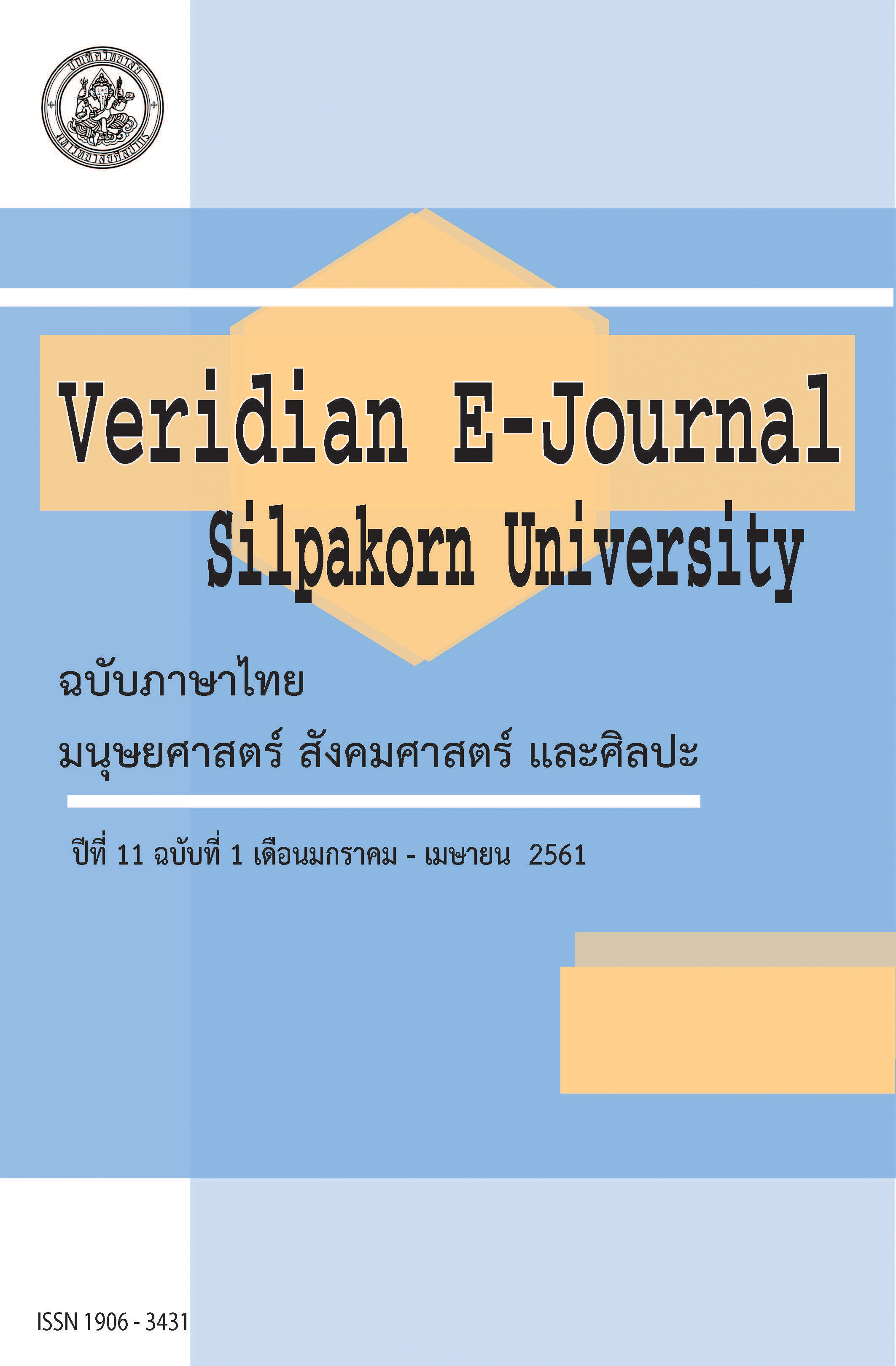การพัฒนารูปแบบการจัดการเรียนรู้ที่เสริมสร้างการคิดอย่างมีวิจารณญาณทางคณิตศาสตร์ของนักเรียนชั้นมัธยมศึกษาปีที่ 2 (Development of A Learning Management Model to Enhance Critical Mathematical Thinking Skills Among of Mathayomsuksa Two Students)
Main Article Content
Abstract
การวิจัยนี้มีจุดมุ่งหมายเพื่อพัฒนาและศึกษาประสิทธิผลของรูปแบบการจัดการเรียนรู้ที่เสริมสร้างการคิดอย่างมีวิจารณญาณทางคณิตศาสตร์ ด้วยการวิจัยและพัฒนา ซึ่งทำการศึกษากับนักเรียนชั้นมัธยมศึกษาปีที่ 2 โรงเรียนธัญรัตน์ จ.ปทุมธานี ในภาคเรียนที่ 1 ปีการศึกษา 2559 จำนวน 47 คน ใช้เวลาในการทดลอง 15 ชั่วโมง วิธีดำเนินการวิจัยแบ่งเป็น 8 ขั้นตอน เครื่องมือที่ใช้วิจัยเป็นแบบทดสอบ วิเคราะห์ข้อมูลเบื้องต้นเพื่อหาค่าสถิติพื้นฐาน โดยผลการวิจัยสรุปได้ดังนี้
- รูปแบบการจัดการเรียนรู้ที่เสริมสร้างการคิดอย่างมีวิจารณญาณทางคณิตศาสตร์ ซึ่งมี 4 องค์ประกอบ ได้แก่ 1) หลักการ 2) วัตถุประสงค์ 3) ขั้นตอน และ4) การประเมิน โดยในขั้นตอนของรูปแบบมีกระบวนการจัดการเรียนรู้ 4 ขั้นตอน คือ 1) ขั้นกระตุ้นการคิด 2) ขั้นปฏิบัติการเรียนรู้ 3) ขั้นนำเสนอ และ4) ขั้นสะท้อน ภายหลังจากผู้เรียนนำเสนอขั้นตอนการแก้ปัญหาเสร็จเรียบร้อยแล้ว ผู้สอนจะให้ข้อมูลป้อนกลับไปยังผู้เรียน แนะแนวทางแก้ไข ปรับปรุงข้อผิดพลาด พัฒนาการคิดอย่างมีวิจารณญาณทางคณิตศาสตร์ โดยผู้สอนใช้วิธีที่หลากหลายในการประเมินและประเมินตามสภาพจริงเป็นระยะๆ ตั้งแต่การระบุประเด็นปัญหา การพิจารณาข้อมูล การตัดสินใจแก้ปัญหา และการนำเสนอ
- ระหว่างการใช้รูปแบบการจัดการเรียนรู้ที่เสริมสร้างการคิดอย่างมีวิจารณญาณทางคณิตศาสตร์ ในระยะที่ 1 ถึง 4 เป็นเวลา 5 สัปดาห์ นักเรียนชั้นมัธยมศึกษาปีที่ 2 มีค่าเฉลี่ยการประเมินการคิดอย่างมีวิจารณญาณทางคณิตศาสตร์ หลังเรียนสูงกว่าก่อนเรียนอย่างมีนัยสำคัญทางสถิติที่ระดับ 0.5
- นักเรียนชั้นมัธยมศึกษาปีที่ 2 หลังใช้รูปแบบการจัดการเรียนรู้ที่เสริมสร้างการคิดอย่างมีวิจารณญาณทางคณิตศาสตร์มีค่าเฉลี่ยการคิดอย่างมีวิจารณญาณทางคณิตศาสตร์สูงกว่าก่อนใช้รูปแบบการจัดการเรียนรู้ที่เสริมสร้างการคิดอย่างมีวิจารณญาณทางคณิตศาสตร์ อย่างมีนัยสำคัญทางสถิติที่ระดับ 0.5
This research aimed to develop and measure the effectiveness of a learning management model to enhance critical thinking skills in mathematics. This study was conducted with forty seven Mathayomsuksa two students at Thanyarat School in the Pathum Thani Province enrolled in the first semester of the 2016 academic year for fifteen hours. The research methodology of this study consists of eight processes. The instrument were the test. The data analysis was composed of preliminary.The results of this study are summarized as follows.
- The learning management model for enhancing critical thinking in mathematics consists of four factors: 1) Principles. 2) Objectives. 3) Process and 4) Evaluation. The learning model has four stages, as follows: 1) Engagement. 2) Learning Action; 3) Presentation and 4) Reflection.
- While this learning management model to enhance critical thinking in mathematics was being tested, at each of the four stages, the Mathayomsuksa Two students had a statistically higher average score on the learning management model for enhancing critical thinking in mathematics after studying than the average score measured prior to studying the subject, at a statistically significant level of 0.5.
- After experimented with this learning management model to enhance critical thinking in mathematics, the Mathayomsuksa Two students had a statistically higher average score on the learning management model to enhance critical thinking in mathematics than the average score measured prior to the experiment at a statistically significant level of 0.5.
